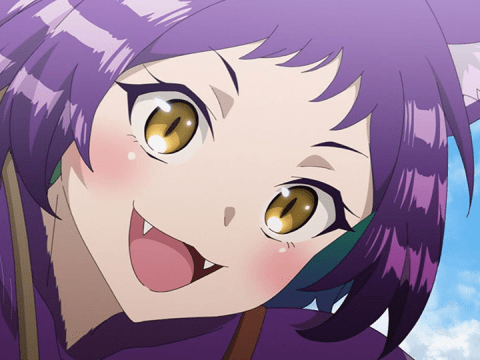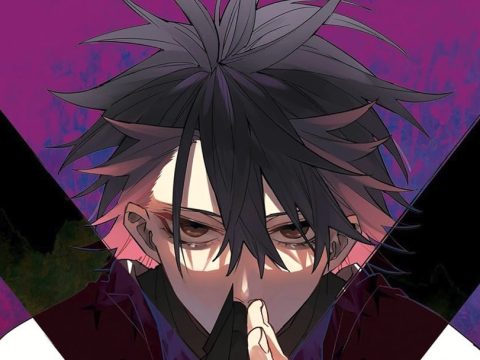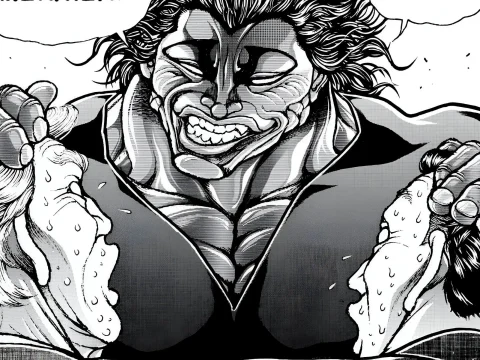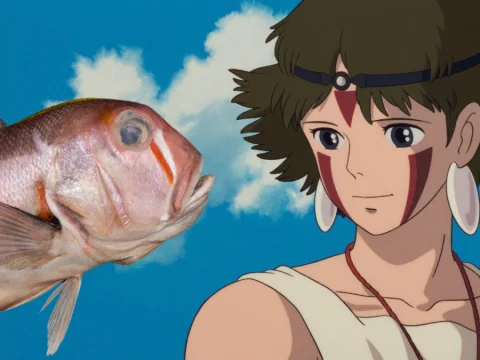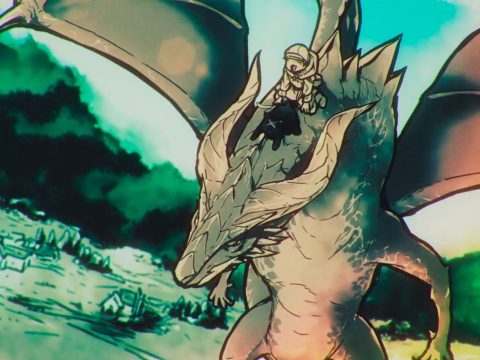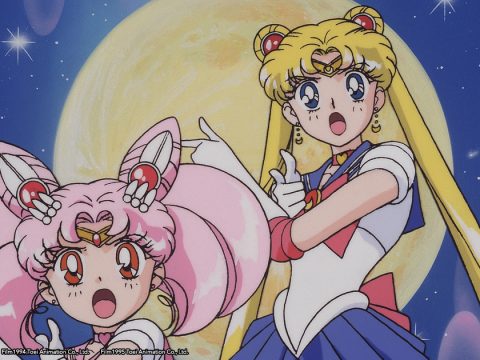
This franchise has a rather strange (if short) history. Afro Samurai began as a doujinshi by author Takashi Okazaki which appeared in an independent Japanese magazine, and from that point, Gonzo and Samuel L. Jackson produced it  as a 5 episode TV series straight to American television. The anime only ever hit Japan after the fact, re-edited into theatrical format. Now it would appear that the original doujinshi is being brought to America, as soft cover serialized volumes of manga.
as a 5 episode TV series straight to American television. The anime only ever hit Japan after the fact, re-edited into theatrical format. Now it would appear that the original doujinshi is being brought to America, as soft cover serialized volumes of manga.
On discovering that it was Gonzo that was involved with the anime series, I immediately figured that Madhouse must have been jealous at missing out on this property. Despite the fact that the story was entirely Okazaki’s original creation before Gonzo had anything to do with it, it most definitely reads as if it was written by the creators of Vampire Hunter D: Bloodlust and Ninja Scroll. Its heavy focus on empty machismo and glorified, katana-laden blood and guts, paired with a sparse post-apocalyptic background and a cast of distinctive, bizarre villains is a dead ringer for anything Yoshiaki Kawajiri might be involved in…even without considering how the African-American angle bodes for its marketability to western audiences. If you’ve seen anything by Madhouse (particularly their contributions to The Animatrix), then you have a pretty good idea of how Afro Samurai will read.
Although “Afro Samurai” is a more apt name for the protagonist, he is actually known in the story as “No. 2”. He’s “the second strongest man in the world”…the world being a strange feudal society in the future where people dress in robes, live in straw huts, and fight with swords even though machineguns, rocket propelled grenades, motorized parade floats, and electronic hip-hop music are readily available. People are trying to kill No. 2 so they can be the new No. 2 and rule the world. No. 2, who happens to be of African-American descent – despite being part of an ancient Japanese culture, wanders around killing people. That’s all you really need to know.
 The art is very strange, because it looks like OEL, even though it’s not. Okazaki’s very scratchy, muddled, heavy-handed style resembles that of a westerner attempting to imitate manga, and takes some getting used to. By the end of the book, you do feel that the style has succeeded in being unique, but you’ve also struggled to make out almost entirely unintelligible faces and anatomy of certain characters, and have striven for pages to ignore the fact that even though he sports what’s supposed to be an afro, No. 1’s pointed hairstyle more closely resembles the shape of a turnip and causes one to imagine the results of a long-haired black man attempting to cosplay as Dragon Ball Z‘s Vegeta.
The art is very strange, because it looks like OEL, even though it’s not. Okazaki’s very scratchy, muddled, heavy-handed style resembles that of a westerner attempting to imitate manga, and takes some getting used to. By the end of the book, you do feel that the style has succeeded in being unique, but you’ve also struggled to make out almost entirely unintelligible faces and anatomy of certain characters, and have striven for pages to ignore the fact that even though he sports what’s supposed to be an afro, No. 1’s pointed hairstyle more closely resembles the shape of a turnip and causes one to imagine the results of a long-haired black man attempting to cosplay as Dragon Ball Z‘s Vegeta.
I cannot deny that Afro Samurai is to some degree fairly compelling to read in its strange confusion of cultural themes, but there’s also not a whole lot to it. No. 2 walks around, people try to kill him, he kills them. Without fully-animated action or Samuel L Jackson’s commanding presence, it’s hard not to imagine that you’re missing out on the entirety of the Afro Samurai experience; the series is certainly not dialogue-heavy at all, or really even story-heavy, so it doesn’t exactly play to the strengths of the manga format, or vice versa. If you’ve seen the anime and want to witness the story expanded over further volumes, then this manga is for you, but otherwise you may as well pass it up.
Publisher: Tor/Seven Seas
Story and Art: Takashi Okazaki
Rating: Older Teen (16+)



